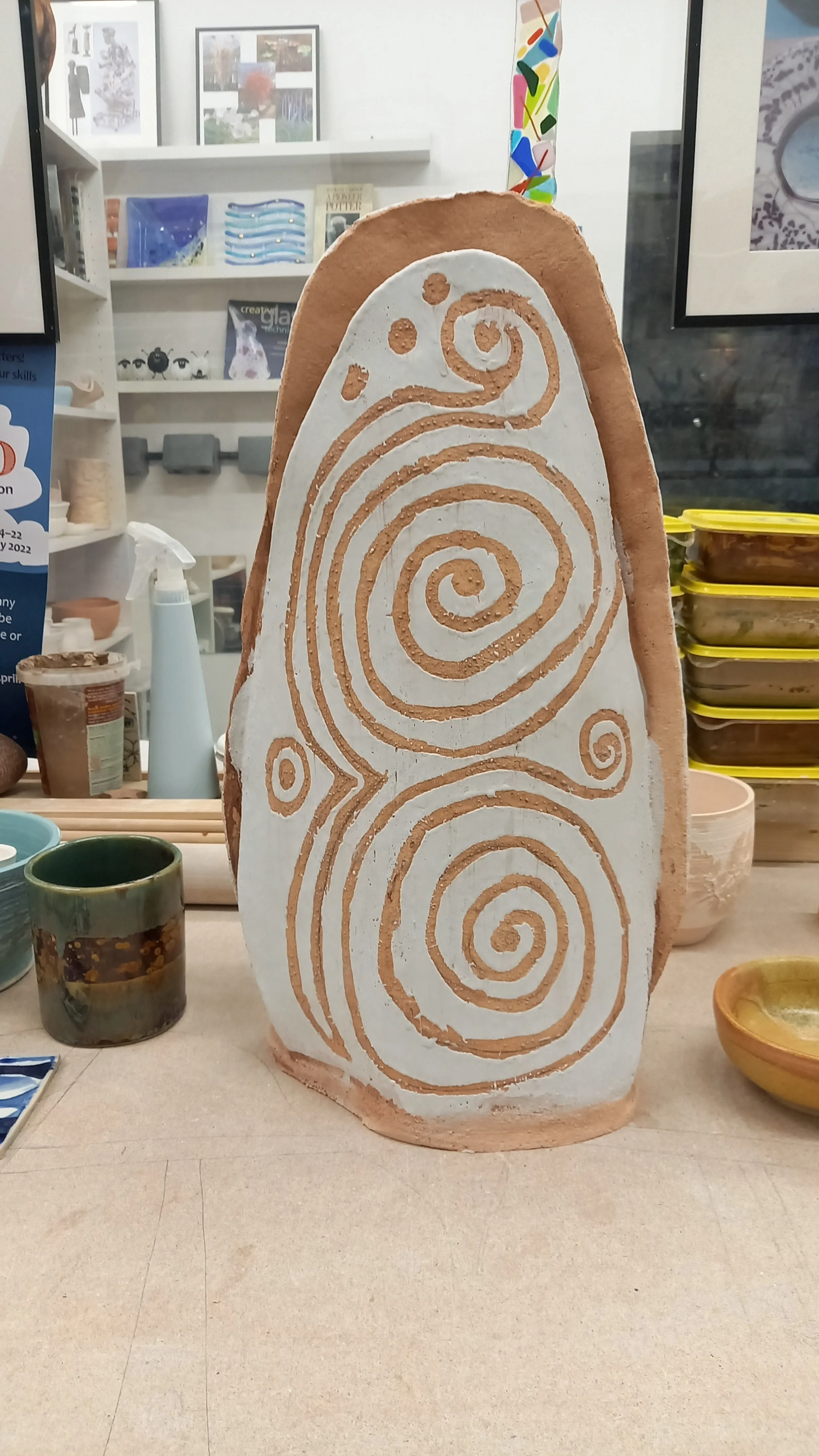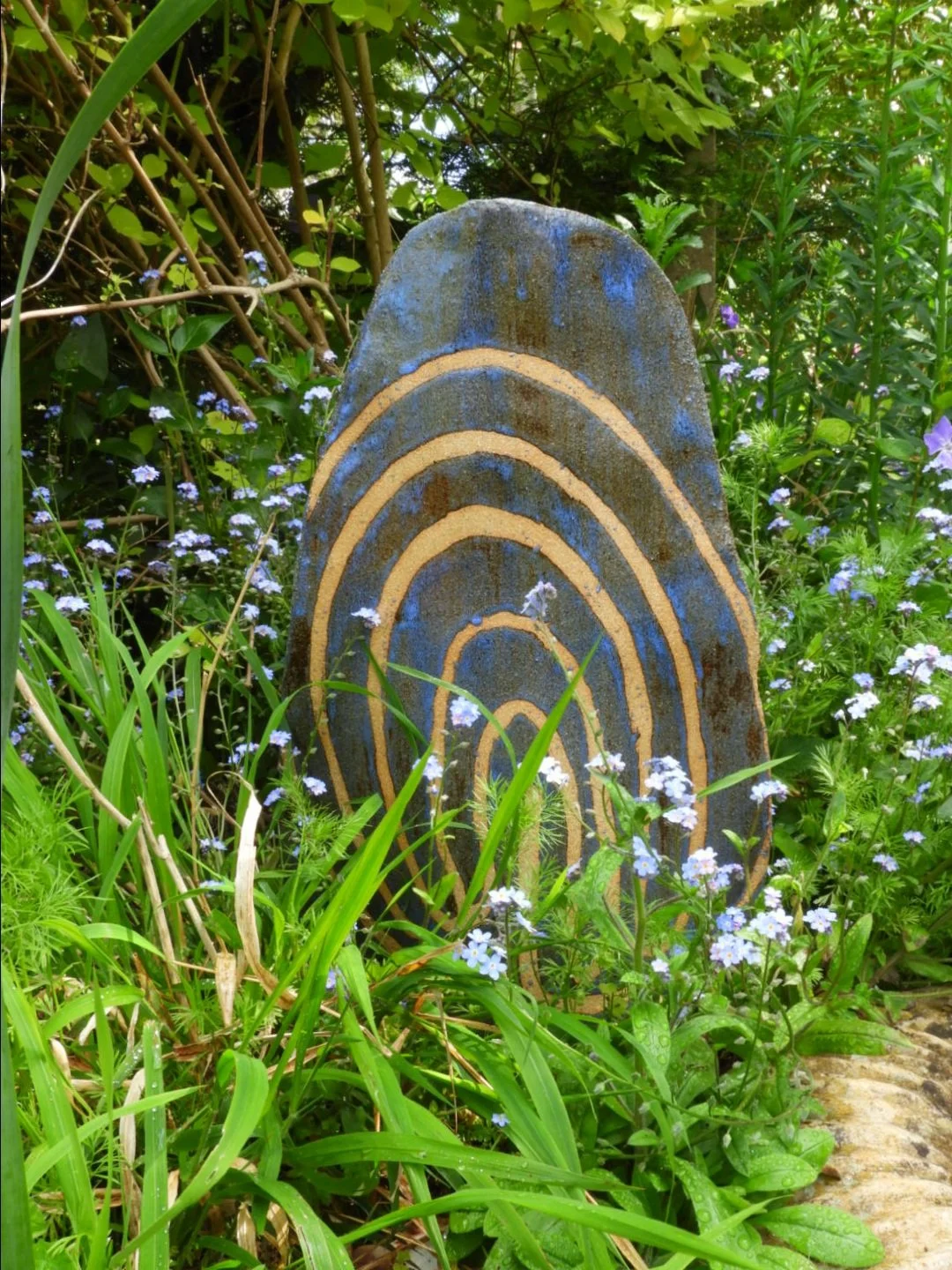Ceramic Sculpture - Mysterious Labyrinths and Circles on Stone
Where my inspiration for ceramics comes from…
From a very young age I had a fascination with the past - both recent and ancient. This is just one source of inspiration, and it overlaps with many others - though they do tend to be rooted in earth and place.
My interest eventually lead to me doing an archaeology degree as a mature student. Archaeology is a subject that can take you to many eras, and many places - in my case I stayed firmly in Europe, but the Europe of the prehistoric age - the neolithic and bronze age, when people first began to settle the land and make considerable changes to it.
I grew up near enough to Ilkley for it to be an easy day trip out - Ilkley has the moor famous for the song about having no hat which we won’t go into here, but also for it’s ‘cup and ring’ marked stones. These date mostly from the Bronze Age (2,000BC to 700 BCE) and the patterns of rings and shallow holes appear across Rombalds Moor.
As I looked into this matter of rock carvings in the prehistoric I began to find out it was a pan European phenomenon. People had been making these patterns all the way from Spain to Ireland, all quite similar, yet among groups of people we would assume didn’t often travel far from home (there are notable exceptions to this of course) and certainly didn’t have Pinterest and Instagram to bolster a trend!
So what was going on? That’s a rather enormous subject to go into here! I think, as populations became more settled, it was about marking a space on the land - either for social, ritual or economic purposes - or a mixture of all three. We’ll never really know.
But what has this got to do with making and decorating pottery?
After years of holding these patterns in my mind, doodling them in margins and sketchbooks, I found the way I wanted to represent this ancient art in my modern pots. I hope them to be designs which will grow, spiral and spread over much more of my pottery. Thwy could appear on pottery mugs and plates, on ceramic wall hangings and on porcelain pendants. The opportunity to use these simple yet effective designs on clay are boundless.
With me being me though, I decided to go big to start with and built two ceramics which represent menhirs (standing stones) with decorations in the glazing influenced by rock art found in France and Ireland.
Building the ceramic standing stones
Basically these are two clay slabs stuck to a third slab, the base. It takes a number of days to make such a thing…rolling out the clay, waiting for the slabs to be “leather hard” (think about how a Dr Martens boot doesn’t flop over when you take it off, I don’t want the clay to do that either) cutting out and then gently bending the two ‘menhir’ shapes over a big cardboard tube, leaving them to ‘set’ a bit and then finally fastening everything together before the bisq (first) firing.
Glazing and Decorating the Ceramic Standing Stones
Once these really quite large ceramic pieces had been fired the decorating started. I did this in different ways for each one, and throught the end result looks the same, one way is much easier than the other, and why didn’t I think of it sooner?! I chose a dark blue-brown glaze which would fire to have pale blue highlights. I’d decided to decorate both sides of each piece - making it recersible, and walk roundable!, rather than leave one side a plain blue.
Once the glaze dried I washed away some of it to make the design using a very tiny sponge - that bit took AGES of course. While I was carefully making spirals and labyrinth in this laborious way it suddenly occured to be I could have painted them on in wax much more quickly and glazed over them - the wax resists the glaze to show the pattern (you probably did this in infant school with Crayola and poster paint). I did the second piece like that - I’m not a glutton for punishment.
Once glazed they went in for their final stoneware firing, which makes them able to live outdoors during cold weather - always useful in a ceramic that really looks at its best in a garden, which is what I’d envisaged for these.
An outdoor photosession in the late spring proved this feeling right, they immediately looked right at home alongside the grass and new growth. The blue really works, and the highlights give the impression of a water or frost sprinkled menhir catching the light.
More information on the inspiration mentioned in this post, if your interest is piqued:






